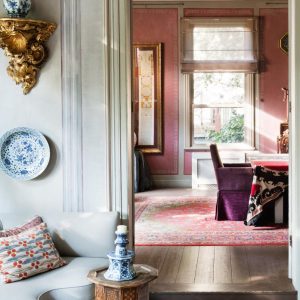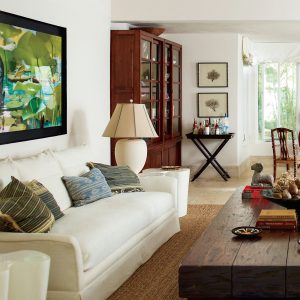
Light Up Your Space: A Guide to Perfect Room Lighting
Introduction
Lighting plays a crucial role in interior design, as it has the power to transform a space and create a desired ambiance. Whether you are designing a cozy living room, a productive home office, or a relaxing bedroom, the right lighting can make all the difference. It not only illuminates the room but also sets the mood and enhances the overall aesthetic appeal. In this article, we will explore the importance of lighting in interior design and provide tips and insights on how to choose and implement the right lighting for your space. Hozo.it
Why Lighting Matters: The Impact of Room Lighting on Mood and Productivity
The psychological effects of lighting on mood and productivity are well-documented. Bright, natural light has been shown to improve mood, increase energy levels, and enhance productivity. On the other hand, dim lighting or harsh fluorescent lights can have a negative impact on mood and make it difficult to focus.
Natural light is especially important in interior design as it provides a connection to the outdoors and creates a sense of openness and spaciousness. It has been proven to reduce stress levels, improve sleep quality, and boost overall well-being. When designing a space, it is important to maximize natural light by using large windows, skylights, or light-colored walls and furniture that reflect light.
Types of Lighting: Understanding the Different Types of Lighting and Their Functions
There are three main types of lighting that are used in interior design: ambient lighting, task lighting, and accent lighting.
Ambient lighting is the general illumination that fills a room. It provides overall brightness and allows people to move around safely. This can be achieved through ceiling-mounted fixtures, such as chandeliers or recessed lights, or through wall-mounted fixtures like sconces.
Task lighting is focused lighting that is used for specific activities such as reading, cooking, or working at a desk. It should be bright enough to prevent eye strain but not so bright that it creates glare. Task lighting can be achieved through desk lamps, under-cabinet lights, or pendant lights.
Accent lighting is used to highlight specific areas or objects in a room, such as artwork, architectural features, or decorative elements. It adds depth and visual interest to a space. Accent lighting can be achieved through track lighting, wall-mounted fixtures, or recessed lights with adjustable heads.
Choosing the Right Bulbs: Factors to Consider When Selecting Light Bulbs
When choosing light bulbs for your space, there are several factors to consider: wattage and lumens, color temperature, and energy efficiency.
Wattage refers to the amount of power consumed by a light bulb, while lumens measure the amount of light emitted. It is important to choose bulbs with the right wattage and lumens for each specific application. For example, a 60-watt incandescent bulb produces about 800 lumens, which is suitable for general ambient lighting in a living room. However, for task lighting or reading, you may need a brighter bulb with higher lumens.
Color temperature refers to the warmth or coolness of light. It is measured in Kelvin (K). Lower color temperatures (2700K-3000K) produce warm, yellowish light that is similar to incandescent bulbs and creates a cozy ambiance. Higher color temperatures (4000K-5000K) produce cool, bluish light that is similar to daylight and creates a more energizing atmosphere. It is important to choose the right color temperature for each room based on its function and desired mood.
Energy efficiency is an important consideration when choosing light bulbs. LED bulbs are the most energy-efficient option as they use up to 80% less energy than traditional incandescent bulbs and can last up to 25 times longer. They may be more expensive upfront but will save you money in the long run through reduced energy consumption and longer lifespan.
Layering Your Lighting: How to Use Multiple Light Sources for Optimal Illumination
Layering lighting is a technique used in interior design to create depth, visual interest, and optimal illumination in a space. It involves using multiple light sources at different levels to provide a combination of ambient, task, and accent lighting.
The benefits of layering lighting are numerous. It allows you to control the intensity and direction of light, create different moods and atmospheres, and highlight specific areas or objects. It also helps to reduce shadows and glare, making the space more comfortable and functional.
To effectively layer lighting in different rooms, consider the function of each space and the activities that will take place there. For example, in a living room, you may want to combine ambient lighting with task lighting for reading or accent lighting to highlight artwork. In a kitchen, you may want to combine ambient lighting with task lighting for cooking or accent lighting to highlight a backsplash.
Color Temperature: The Importance of Choosing the Right Color Temperature for Your Space
Color temperature plays a crucial role in setting the mood and ambiance of a space. Different color temperatures have different effects on our perception and emotions.
Warm color temperatures (2700K-3000K) create a cozy and intimate atmosphere. They are often used in bedrooms, living rooms, and dining rooms where relaxation and comfort are desired. Warm light is also flattering to the skin and can make people feel more relaxed and at ease.
Cool color temperatures (4000K-5000K) create a bright and energizing atmosphere. They are often used in kitchens, bathrooms, and home offices where clarity and focus are important. Cool light can make people feel more alert and awake, making it ideal for task-oriented activities.
When choosing the right color temperature for different rooms, consider the function of each space and the desired mood. For example, in a bedroom, you may want to use warm color temperatures to create a calming and soothing environment. In a home office, you may want to use cool color temperatures to promote focus and productivity.
Dimming Your Lights: The Benefits of Dimmer Switches and How to Use Them
Dimming lights is a great way to create ambiance and control the intensity of light in a space. It allows you to adjust the brightness according to your needs and preferences, whether you want a soft, romantic glow or bright, task-oriented lighting.
The benefits of dimming lights are numerous. It can help reduce eye strain, create a more comfortable and relaxing atmosphere, and save energy. By dimming the lights, you can also highlight specific areas or objects in a room, such as artwork or architectural features.
To install dimmer switches, you will need to replace your existing light switches with dimmer switches. This can be done by following the manufacturer’s instructions or hiring a professional electrician. Once installed, you can adjust the brightness of your lights by turning the dimmer switch up or down.
Task Lighting: How to Incorporate Task Lighting into Your Room Design
Task lighting is essential for creating functional and productive spaces. It provides focused illumination for specific activities such as reading, cooking, or working at a desk.
When incorporating task lighting into your room design, consider the specific tasks that will be performed in each space and the amount of light needed. For example, in a home office, you may need a bright desk lamp that can be adjusted to different angles for optimal lighting while working. In a kitchen, you may need under-cabinet lights that provide direct illumination for food preparation.
Task lighting should be positioned in such a way that it does not create shadows or glare. It should be bright enough to prevent eye strain but not so bright that it creates discomfort. Adjustable task lighting is ideal as it allows you to direct the light exactly where you need it.
Accent Lighting: Using Accent Lighting to Highlight Artwork and Decorative Features
Accent lighting is a great way to highlight specific areas or objects in a room, such as artwork, architectural features, or decorative elements. It adds depth, visual interest, and a focal point to a space.
When using accent lighting, consider the size and scale of the object you want to highlight and the desired effect. For example, a small piece of artwork may require a small spotlight or track light, while a large sculpture may require a larger fixture or multiple lights.
Accent lighting should be positioned in such a way that it does not create shadows or glare on the object being highlighted. It should be bright enough to draw attention but not so bright that it overwhelms the rest of the space. Adjustable accent lighting is ideal as it allows you to direct the light exactly where you want it.
Lighting Placement: Tips for Placing Light Fixtures for Maximum Impact
Proper lighting placement is crucial for achieving maximum impact and functionality in a space. It involves strategically positioning light fixtures to provide optimal illumination and create the desired ambiance.
When placing light fixtures, consider the function of each space and the activities that will take place there. For example, in a dining room, you may want to position a chandelier directly above the dining table to provide focused illumination for meals. In a living room, you may want to position floor lamps or table lamps near seating areas for reading or conversation.
It is also important to consider the size and scale of the room and the height of the ceiling when placing light fixtures. For example, in a small room with low ceilings, you may want to use recessed lights or wall-mounted fixtures to save space and create an illusion of height.
Energy Efficiency: How to Choose Energy-Efficient Lighting Options for Your Home
Energy efficiency is an important consideration when choosing lighting options for your home. Not only does it help reduce your carbon footprint and save money on energy bills, but it also ensures that your lighting fixtures are environmentally friendly and sustainable.
LED bulbs are the most energy-efficient option as they use up to 80% less energy than traditional incandescent bulbs and can last up to 25 times longer. They may be more expensive upfront but will save you money in the long run through reduced energy consumption and longer lifespan.
When choosing lighting fixtures, look for the ENERGY STAR label, which indicates that the product meets strict energy efficiency guidelines set by the U.S. Environmental Protection Agency. ENERGY STAR certified lighting fixtures use up to 90% less energy than standard models and can last up to 15 times longer.
Conclusion
In conclusion, lighting is a crucial element in interior design that can transform a space and create a desired ambiance. It has the power to enhance mood, improve productivity, and highlight specific areas or objects. By understanding the different types of lighting, choosing the right bulbs, layering lighting, considering color temperature, using dimmer switches, incorporating task and accent lighting, placing light fixtures strategically, and choosing energy-efficient options, you can create a well-lit and visually appealing space that meets your needs and preferences. So go ahead and let there be light in your home!


